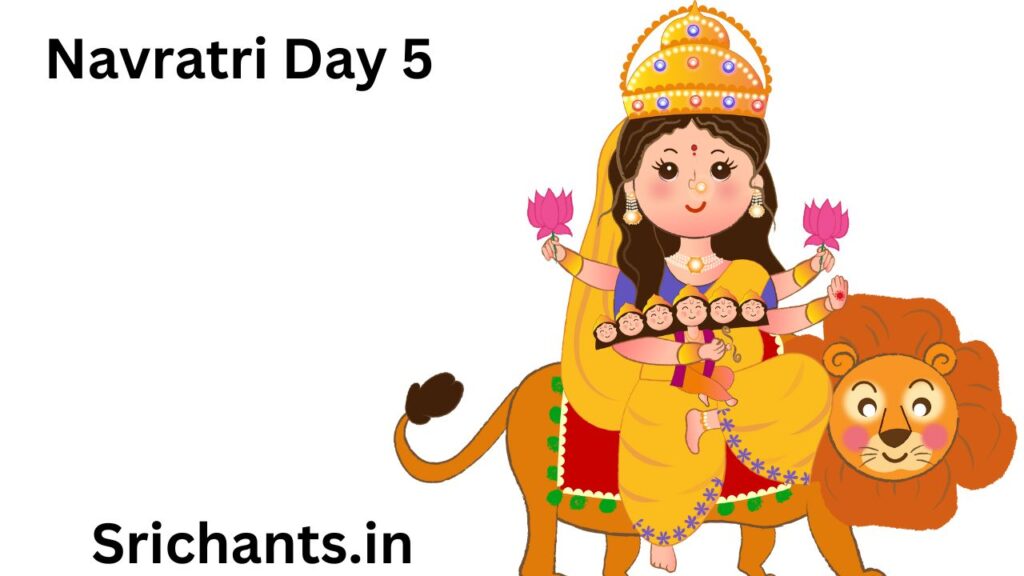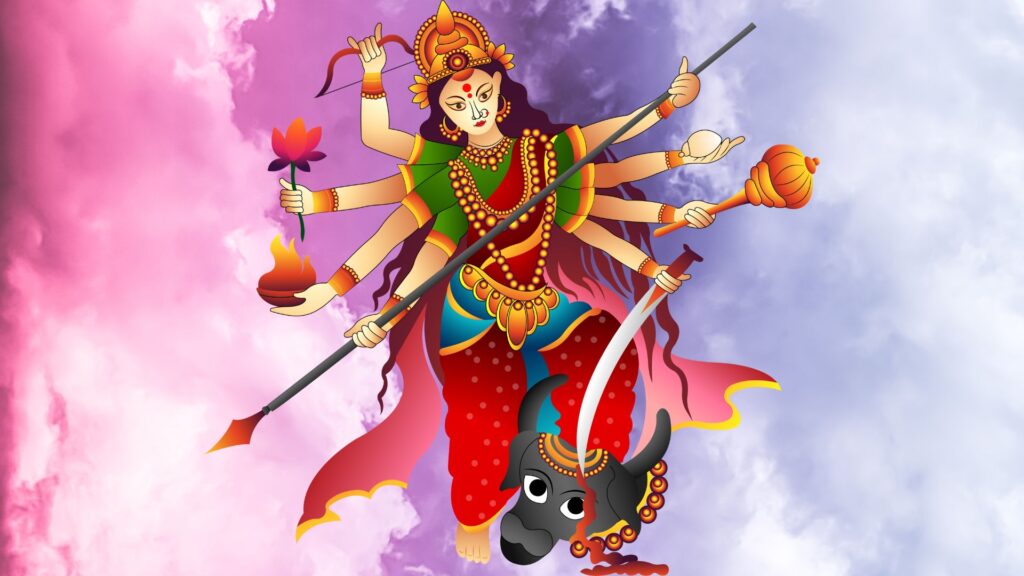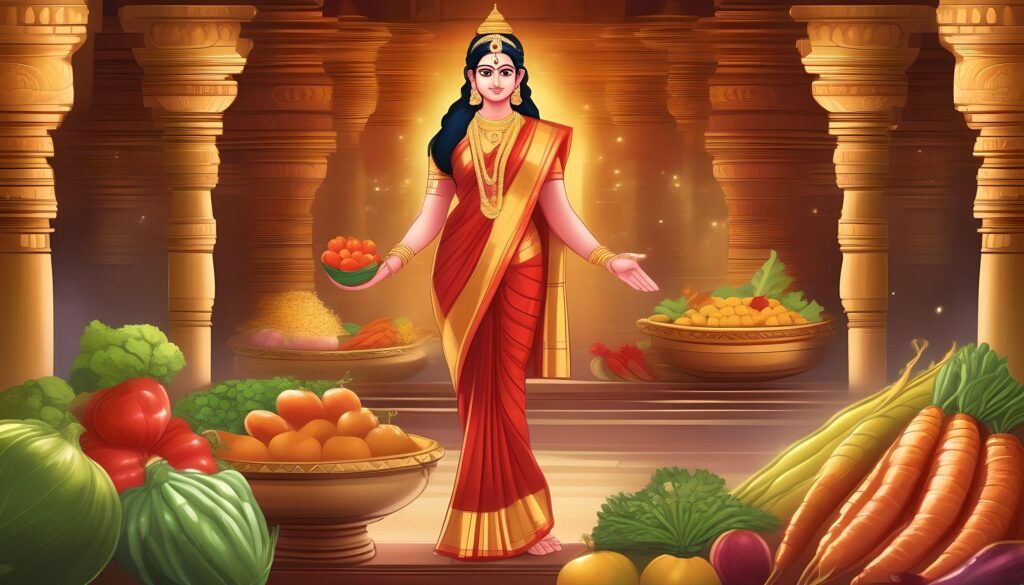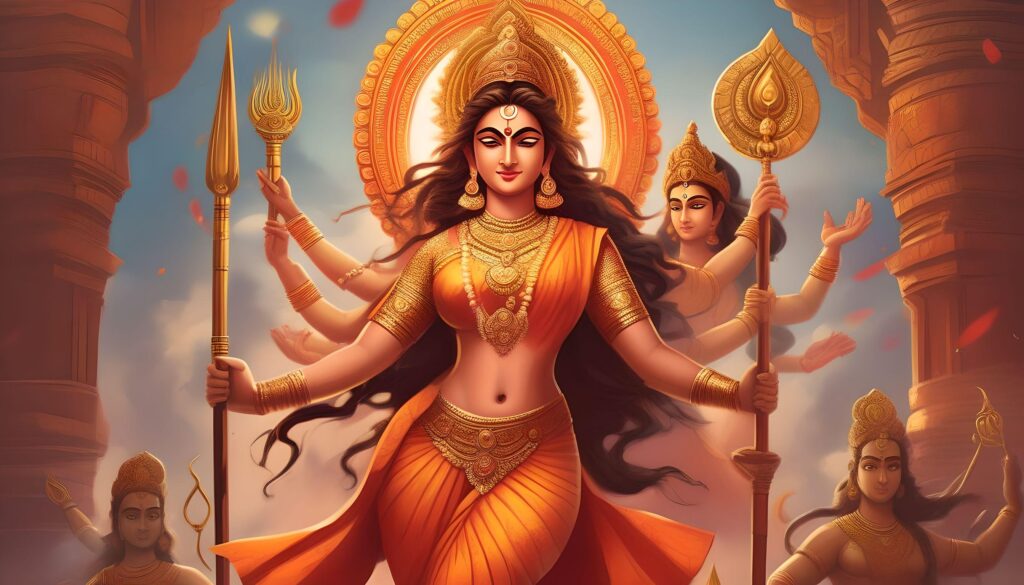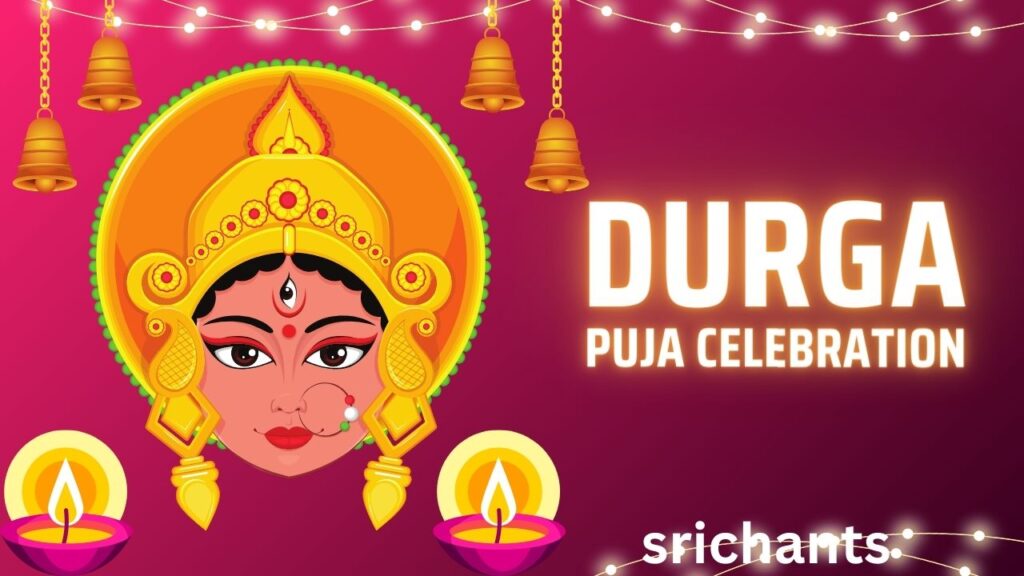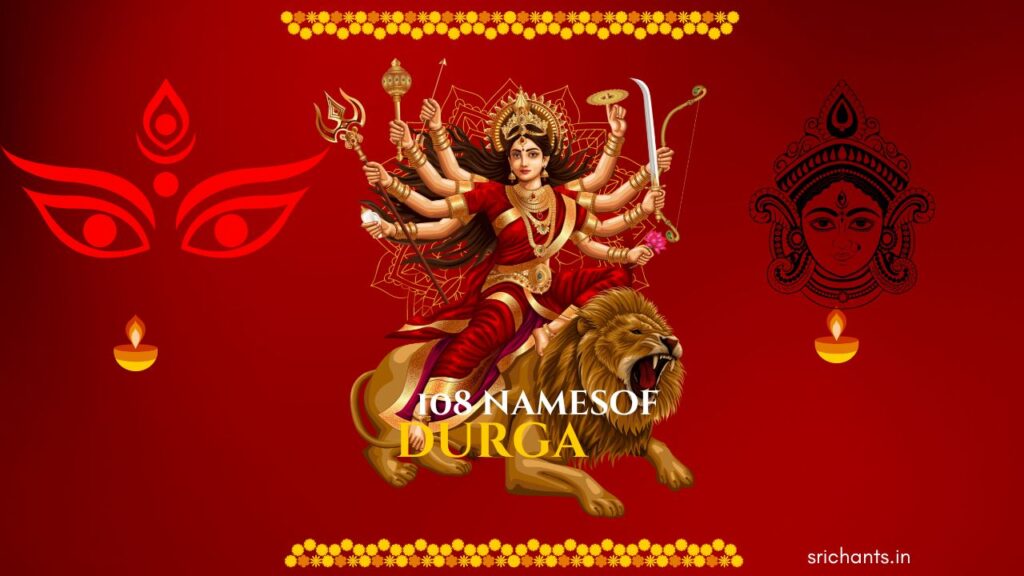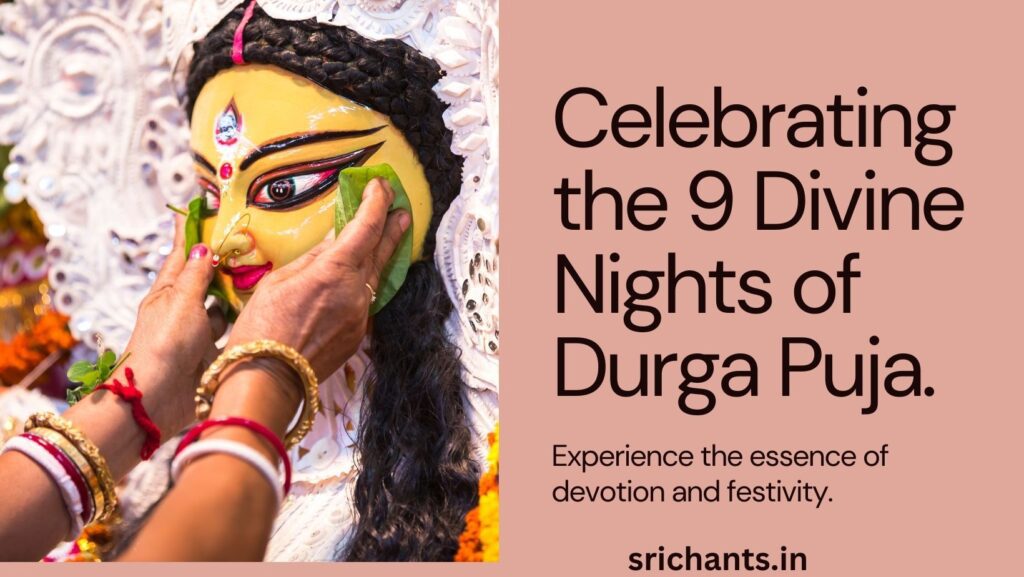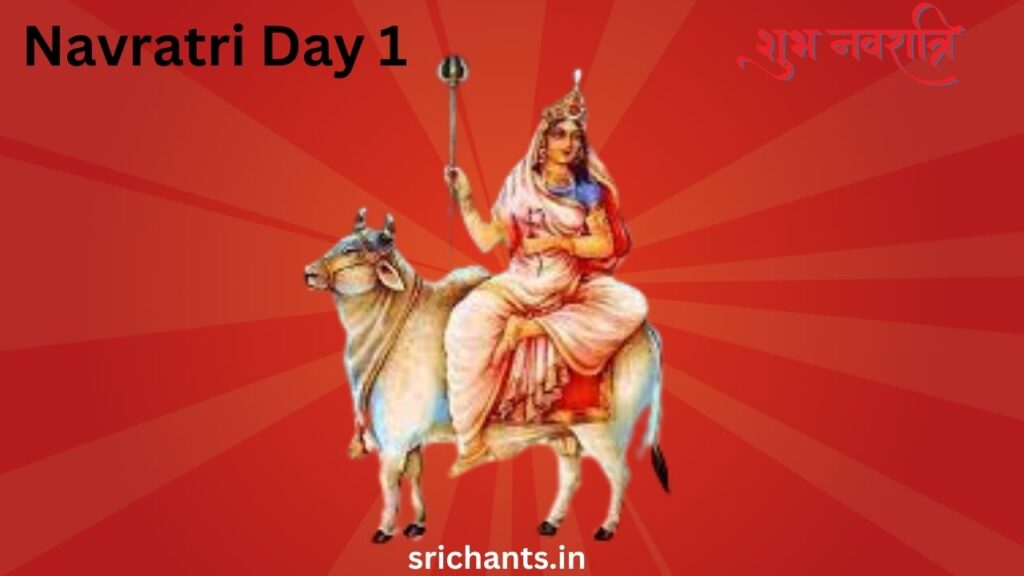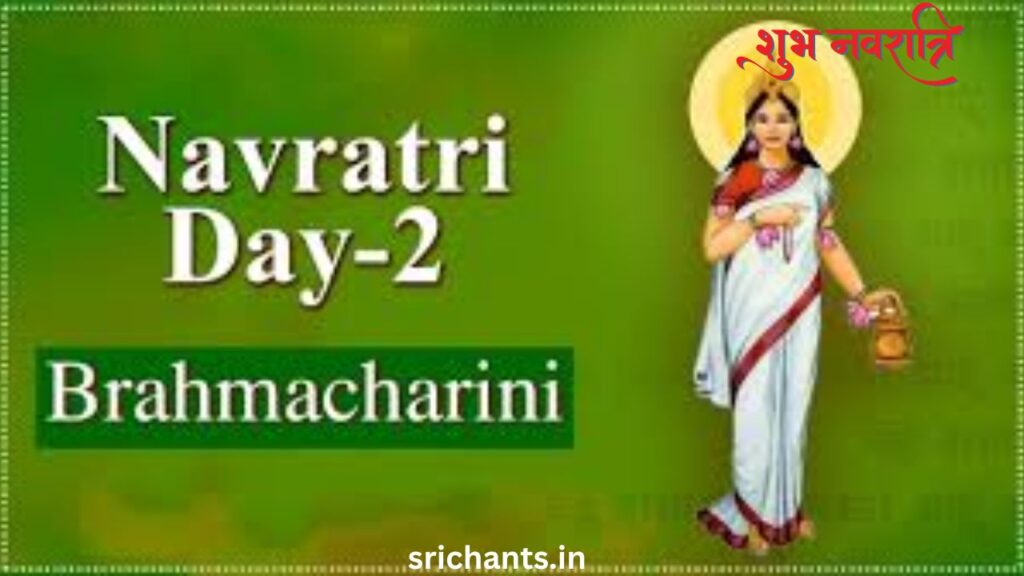Navratri Day 5 : Maa Skandamata: The Embodiment of Motherly Love and Protection
Introduction
Devotees throughout India are eagerly anticipating the opportunity to honor and venerate Maa Skandamata, the divine mother who embodies the attributes of compassion, nurturing, and protection, as the fifth day of the auspicious Navratri festival approaches. In the hearts of worshippers, this revered manifestation of Goddess Durga holds a special place, as she is believed to bestow an abundance of prosperity, good fortune, and spiritual enlightenment upon her devotees.
The Significance of Maa Skandamata
Maa Skandamata, also known as Skanda or Murugan, is the mother of Lord Kartikeya, who holds a distinctive position in the Hindu pantheon. She is frequently depicted seated on a majestic lion, cradling the infant Kartikeya in her bosom, and wearing a serene and benevolent countenance. The divine attributes of empowerment, nurturing, and protection are symbolized by her four-armed form.
The Iconography of Maa Skandamata
Maa Skandamata’s iconography is replete with symbolism and significance. She is typically depicted with a shubhra (pure white) complexion, which symbolizes her divine purity and transcendental nature, and she is adorned in gilded finery. The sacrosanct lotus flowers are held by her four hands, which symbolize purity and spiritual enlightenment. Additionally, one hand is positioned in the Abhaya Mudra, a gesture of assurance and protection.
The Significance of the Fifth Day of Navratri
The fifth day of Navratri, which is dedicated to the worship of Maa Skandamata, is of great importance to devotees. Devotees are believed to obtain the blessings of Maa Skandamata and the grace of Lord Kartikeya, the revered deity of war and wisdom, by honoring this aspect of the Goddess.
The Legends and Mythology Surrounding Maa Skandamata
Maa Skandamata’s origins can be traced back to the epic battle between the deities and the demon Tarkasur, as per Hindu scriptures. The demon, who was in pursuit of immortality, had received a boon from Lord Brahma that stipulated that he could only be defeated by the offspring of Lord Shiva and Goddess Parvati. The deities recognized the severity of the situation and appealed to Lord Shiva and Goddess Parvati, who subsequently graced the world with the birth of their son, Lord Kartikeya. Maa Skandamata, the personification of Goddess Parvati’s maternal love and power, is cherished for her role in guiding and empowering her son to defeat the formidable Tarkasur.

Image Source: Pinterest
The Significance of the Color Yellow
The fifth day of Navratri is symbolized by the vibrant and auspicious color yellow, which is associated with spiritual enlightenment, prosperity, and pleasure. In order to honor Maa Skandamata and invoke her blessings, devotees frequently don yellow garments and adorn the deity with yellow blossoms, such as marigolds.
The Puja Rituals and Offerings
Devotees rise early on the day that is dedicated to Maa Skandamata, bathe, and don clean attire, preferable yellow, before beginning the puja rituals. The deity is decorated with garlands, vermilion, and other auspicious items, and offerings of fruits, sweets, and sacrosanct Gangajal (water from the Ganges) are made. The puja is incomplete without the recitation of the Durga Saptashati, a sacred text that extols the virtues of the Goddess.
The Significance of Fasting
Numerous devotees observe a fast on this day, adhering to a Sattvic (pure) diet that refrains from consuming non-vegetarian foods, scallions, and garlic. This practice is reputed to facilitate a more profound connection with the divine by purifying the body and psyche.
The Blessings and Wishes Sought from Maa Skandamata
Maa Skandamata is regarded with respect for her capacity to satisfy the aspirations and desires of her followers. She is frequently sought out by individuals who are in search of the favor of progeny, as she is believed to bestow the gift of children. Furthermore, devotees pray to her for the removal of obstacles in their lives, prosperity, and protection.
The Mantra and Stuti Dedicated to Maa Skandamata
Maa Skandamata’s primary mantra is the “Om Devi Skandamatayay Namah,” which invokes her divine presence and requests her blessings. “Ya Devi Sarvabhuteshu Ma Skandamata Rupena Samsthita, Namastasyai Namastasyai Namastasyai Namo Namah” is a potent stuti (hymn) that pays homage to the Goddess and extols her virtues.
The Significance of Maa Skandamata in the Navratri Celebrations
The fifth day of Navratri, which is dedicated to Maa Skandamata, is held in high regard by devotees. Devotees are believed to obtain the grace of Lord Kartikeya, who is revered as the commander-in-chief of the divine forces, in addition to the blessings of the Goddess, by honoring this aspect of the Goddess.
The Spiritual Significance of Maa Skandamata
Maa Skandamata is held in high regard as the embodiment of divine maternity, representing the Goddess’s nurturing, protective, and empowering qualities. It is believed that her worship assists devotees in the development of these qualities within themselves, thereby nurturing a more profound connection with the divine and a more profound sense of spiritual fulfillment.
Conclusion
The fifth day of Navratri, which is dedicated to the veneration of Maa Skandamata, is a time of profound spiritual significance and celebration. Devotees endeavor to invoke the blessings of prosperity, protection, and the fulfillment of their innermost desires by honoring this revered form of the Goddess. Devotees endeavor to align themselves with the divine energy of Maa Skandamata, the embodiment of maternal love and compassion, by adhering to rituals, fasting, and reciting sacred mantras.
#skandamata #5thdayofnavratri #skandamata #skandamata #navratri5thdaypujavidhi #navratriday5 #navratri5thday #5thdayofnavratri #navratri5thday
